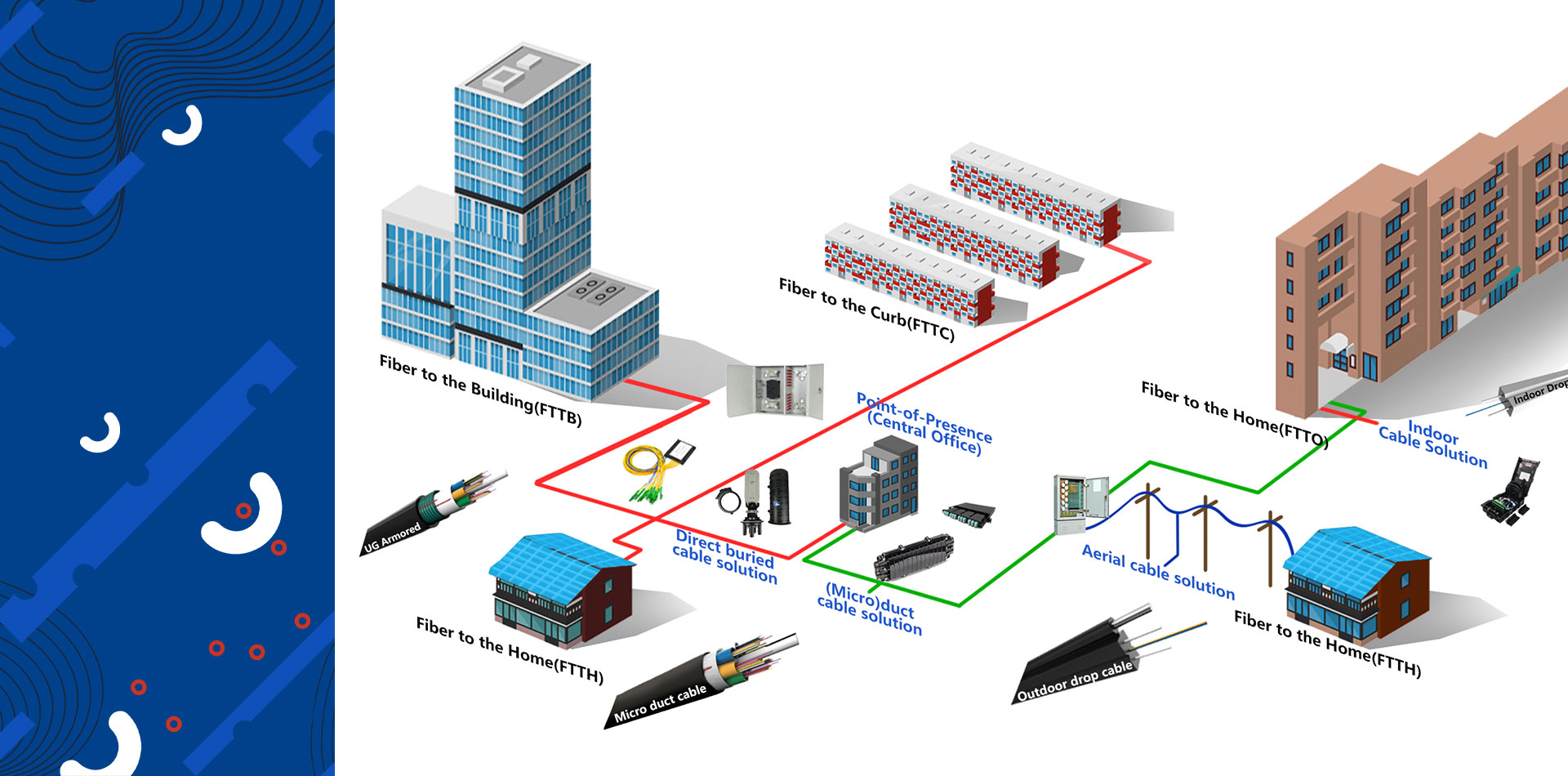Aerial Figure 8 Fiber Optic Cable: A Comprehensive Guide for Building-to-Building Suspension
For modern telecommunications and network infrastructure, the aerial Figure 8 fiber optic cable has emerged as a versatile and efficient solution for deploying high-speed connectivity between buildings, especially in urban and rural environments. Its unique design and robust construction make it ideal for aerial installations, where cables are suspended between poles, towers, or directly anchored to buildings. This article explores the structure, advantages, applications, and installation best practices of aerial Figure 8 cables in building-to-building scenarios.
What is an Aerial Figure 8 Fiber Optic Cable?
The term “Figure 8″ refers to the cable’s distinctive cross-sectional shape, resembling the numeral “8.” This design integrates two key components into a single unit:
Optical Fiber Core: Contains glass or plastic fibers for transmitting data via light signals.
Integrated Messenger Wire: A steel or dielectric strength member that provides structural support and enables suspension.
The two components are co-extruded within a protective outer jacket, creating a self-supporting cable that eliminates the need for separate support wires. This streamlined design simplifies installation and reduces costs.
Key Features and Benefits of Aerial Figure 8 Fiber Optic Cable
1. Aerial Deployment Efficiency
Self-Supporting Design: The integrated messenger wire allows the cable to span long distances (typically 50–150 meters) between buildings or utility poles without additional support hardware.
Lightweight and Flexible: Despite its strength, the cable is lightweight, easing handling and reducing load on suspension points.
2. Durability and Environmental Resistance
Weatherproof Jacketing: Made from materials like polyethylene (PE) or UV-resistant LSZH (Low Smoke Zero Halogen), the cable withstands harsh conditions, including rain, wind, and temperature extremes.
Rodent and Abrasion Resistance: Reinforced layers protect against physical damage from wildlife or friction during installation.
3. Cost-Effective Installation
Reduced labor and material costs compared to traditional setups requiring separate fibers and support cables.
Minimal maintenance requirements due to its robust construction.
4. Versatility in Applications
Ideal for urban areas, industrial campuses, and rural regions where trenching or underground cabling is impractical.
Supports FTTH (Fiber-to-the-Home), 5G backhaul, and enterprise network expansions.
Building-to-Building Suspension: Installation Considerations
Deploying aerial Figure 8 cables between buildings requires careful planning to ensure safety, performance, and compliance with local regulations.
1. Pre-Installation Planning
Route Survey: Assess the distance between buildings, potential obstructions, and load-bearing capacity of anchor points.
Regulatory Compliance: Adhere to local codes for aerial cable height, tension, and proximity to power lines.
2. Installation Steps
Anchor Point Preparation: Install corrosion-resistant brackets or clamps on building facades or rooftops.
Cable Tensioning: Use a tensioning tool to apply optimal force (typically 10–20% of the cable’s maximum rated tensile strength) to prevent sagging or overstressing.
Mid-Span Support: For spans exceeding 100 meters, intermediate poles or slack loops may be required to distribute weight.
3. Safety and Maintenance
Ground Clearance: Maintain a minimum height of 4.5 meters over roads and 3.5 meters over pedestrian areas.
Regular Inspections: Check for sagging, jacket damage, or corrosion at anchor points, especially after extreme weather events.
Applications in Building Connectivity
Aerial Figure 8 cables are particularly advantageous in scenarios such as:
Urban High-Rise Networks: Connecting office buildings, data centers, or residential complexes.
Temporary Deployments: Rapid setup for event venues or disaster recovery.
Campus Networks: Linking multiple buildings within universities, hospitals, or industrial parks.
Comparison to Alternative Solutions
vs. Underground Cables: Avoids excavation costs and delays but is more exposed to environmental risks.
vs. Loose-Tube Aerial Cables: Figure 8’s integrated design simplifies installation, whereas loose-tube cables require separate lashing.
The aerial Figure 8 fiber optic cable represents a critical advancement in outdoor network deployments, offering a balance of strength, simplicity, and cost efficiency. For building-to-building installations, its self-supporting design and resilience make it a go-to choice for telecom providers, enterprises, and municipalities aiming to bridge connectivity gaps. By adhering to best practices in installation and maintenance, stakeholders can ensure reliable, long-term performance in even the most challenging environments.
Post time: Feb-17-2025

